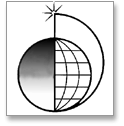 |
|||||||
 Aerial Images, Inc. - Launching, Literally
Aerial Images, Inc. - Launching, Literally
For the last ten years, Aerial Images, Inc. has been in the business of providing high resolution satellite and aerial imagery to professionals, which includes cartographers, geographers, city planners and the like. During that time, the company made several attempts, with limited success, to unseat the dominant provider within their market.
Recently, Aerial Images embarked on a counter-intuitive approach to opening up the professional marketplace by "inverting" the market and aggressively building a brand for themselves in the much larger consumer segment. With a widely recognized brand, the company believed that they could leverage themselves back into the lucrative professional segment. A seemingly impossible task, except for the fact that the company had an ace up their sleeve.
Management at the company negotiated and acquired the exclusive worldwide distribution rights for the previously classified archive of Russian satellite images of the world. The plan was to allow anyone the opportunity to view these images for free, branded under their name, on the World Wide Web. And then, for a small fee, people could download these images or have various-sized photographic prints created.
Armed with these distribution rights and several terabytes of data, the company approached Microsoft to build and host this new Web site (www.terraserver.com) as a proof point of the scalability of Windows NT and Microsoft's SQL Server database. After securing an agreement with Microsoft, Compaq Computer joined the team to provide all the hardware support for the site. Kodak also became the partner, offering the photographic output to consumers of the site.
Meeting The Challenge
When ROI Marketing met Aerial Images for the first time, the
company president, John Hoffman, had just returned from the
Baikonur Space Center in Kazakhstan. While there, Mr. Hoffman
finalized plans for the first joint U.S./Russian space launch of
a satellite designed to obtain high-resolution images of the
Earth for commercial use. This flight was to aim its cameras at
the southeastern quadrant of the United States and major
population centers around the World.
Our challenge was to find a way to promote this rocket launch, which was to occur within three weeks of our first meeting, if conditions for the launch were right. In discussions, we were able to determine that our true mission went far beyond the rocket launch to the market launch of the Terraserver. And more importantly, the real objective was to ultimately drive substantial traffic to the Web site.
We also came to understand that there were three key events that would take place over a four-month period. First, there was the rocket launch in February, followed by the recovery of the satellite and its film in April, and then finally the delivery on the Web of these newly captured photographs of the earth in late Spring.
This product launch became much more than a new technology announcement. It was clearly a consumer product launch; and we were tasked with building traffic to the site in the vicinity of 50,000,000 hits within the first quarter of operation. No small task.
The only way we believed we could begin to approach this hit rate was through an extremely well-executed public relations push. Immediately, and with absolutely no time to spare, we set out to find a media relations agency that had the right skills to support our effort. After quite a bit of searching, we came upon Schwartz Communications, Boston, Massachusetts. Within the company, there was a team, consisting of the former Director of Communications for the Space Division of a large computer manufacturer, as well as a member of Vice President Al Gore's press team. We immediately pushed for a meeting and convinced them to take the company on and to do the impossible.
Out of This World
Through no small effort, and a wonderful press release entitled
"Say Cheese!", the news media in cities across the southeastern
United States were informed as to when the satellite would pass
overhead. Immediately following the rocket launch, Aerial Images
appeared in a three-minute news segment on CNN, as well as on
MSNBC and on several local TV stations in the Southeast. In
print, USA Today, The Financial Times, Associated Press,
Reuters, Knight-Ridder, UPI and practically every local
newspaper across the entire Southeastern U.S ran the story.
In April, CBS ran the story of the recovery of the satellite and its film. Anticipation for the hosting of these new images on the Web started to build. At the time of the launch of the Terraserver site, on June 24, 1998, anticipation was drummed to a fevered pitch, so much so that coverage came in fast and furious - a large photo of the Web site in Newsweek's Cyberscope on July 6; coverage in the Wall Street Journal twice during the week of July 2; and coverage in The New York Times, LA Times, San Francisco Chronicle, The Christian Science Monitor and many more national and regional publications, along with several dozen TV stations.
The net result within the first day of Terraserver's launch was 50,000,000 hits to the site. And within the first two months, the site experienced 700,000,000 hits, with an average hit rate of 10-15,000,000 hits per day. As of this writing, Aerial Images is well on its way to assuming a much stronger and credible position within the professional market segment. Through continued diligence in marketing themselves, all bets are now on them to emerge as the branded market leader.
 BACK TO THE ROI CLIENTS PAGE
BACK TO THE ROI CLIENTS PAGE
Copyright ROI Marketing Management. All Rights Reserved.